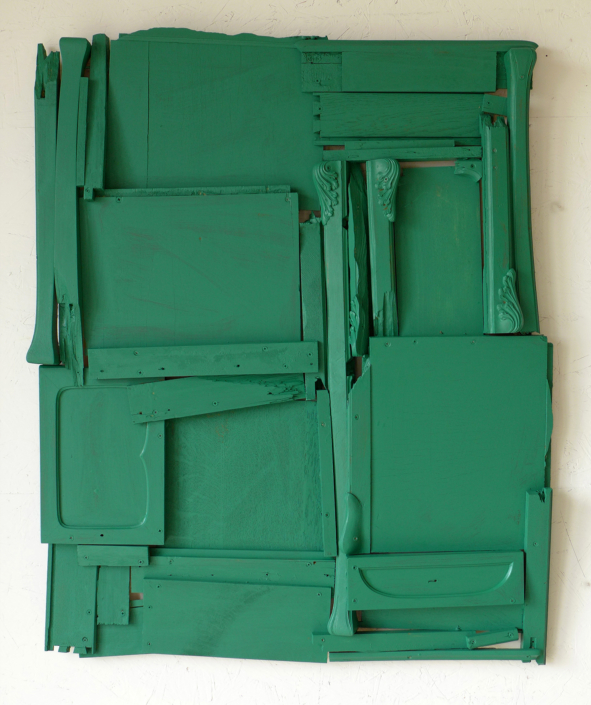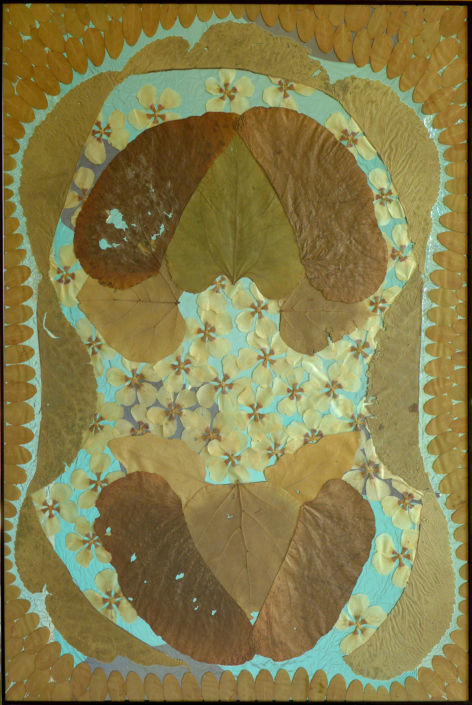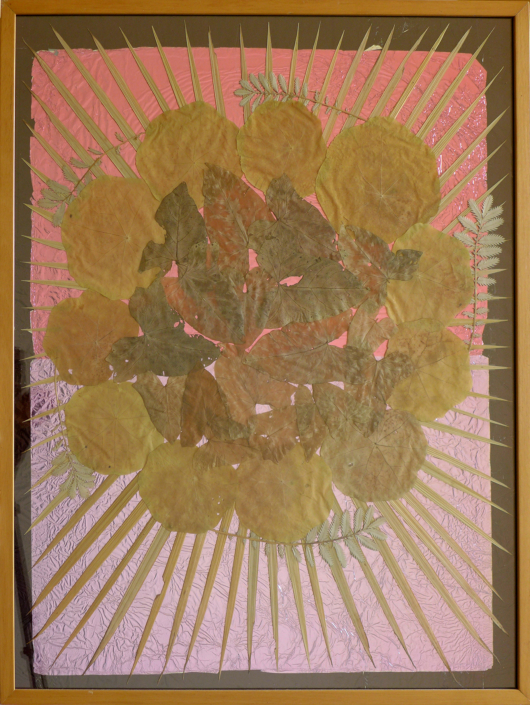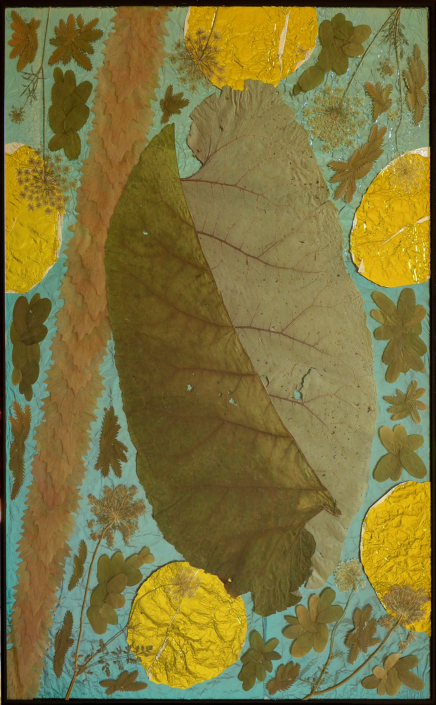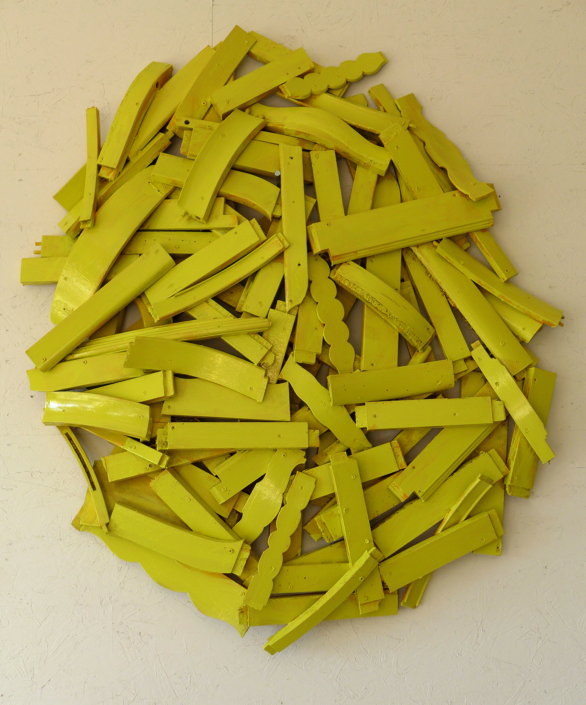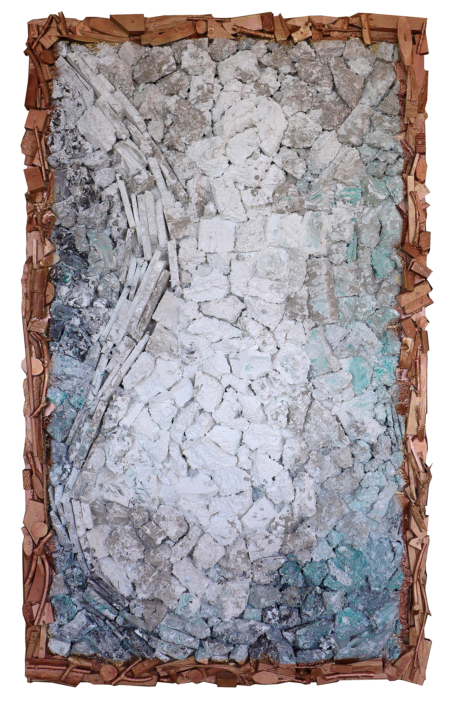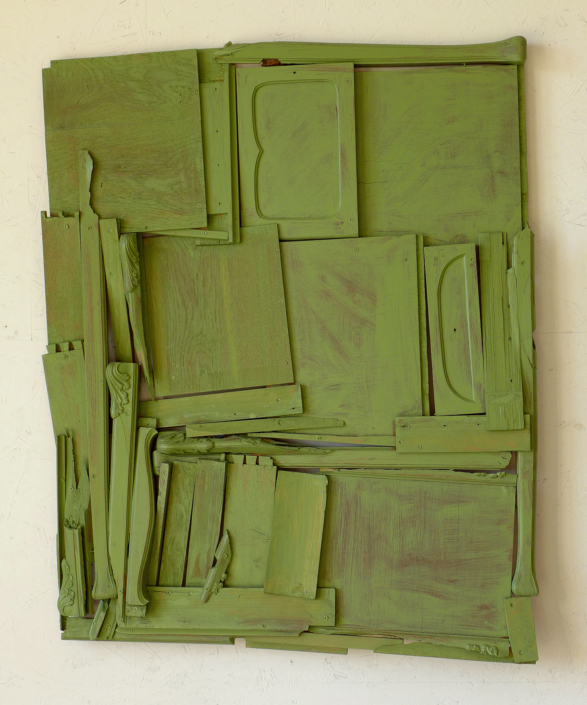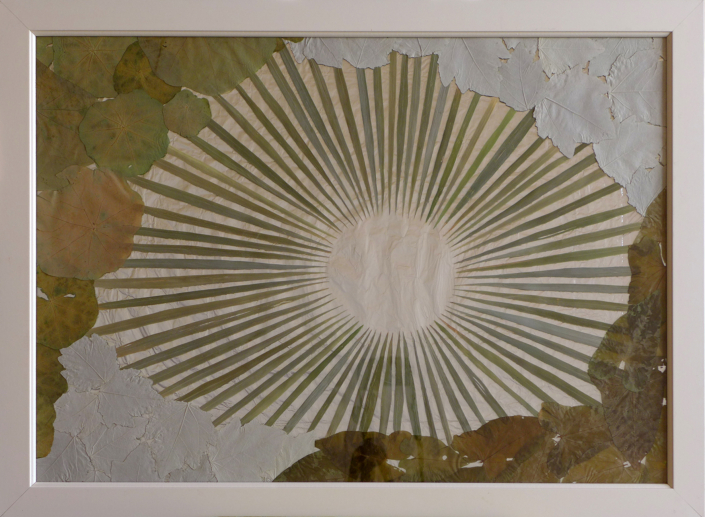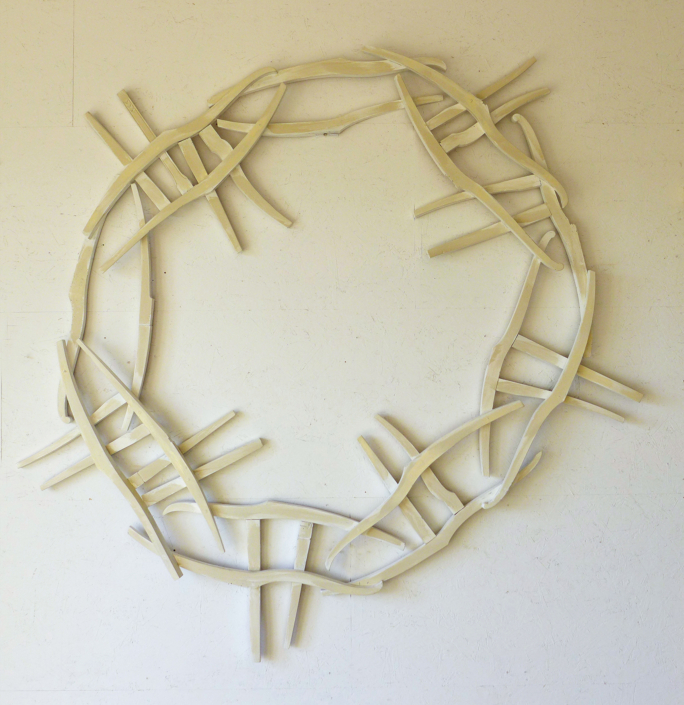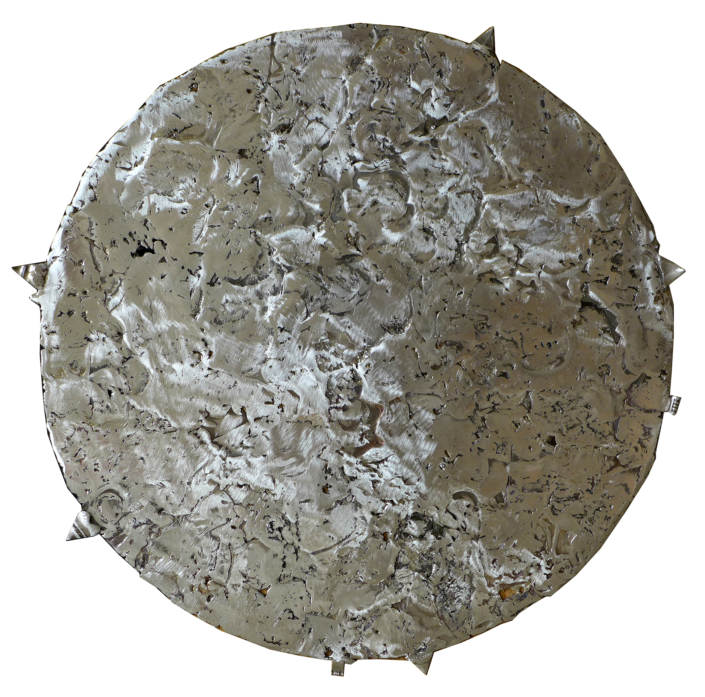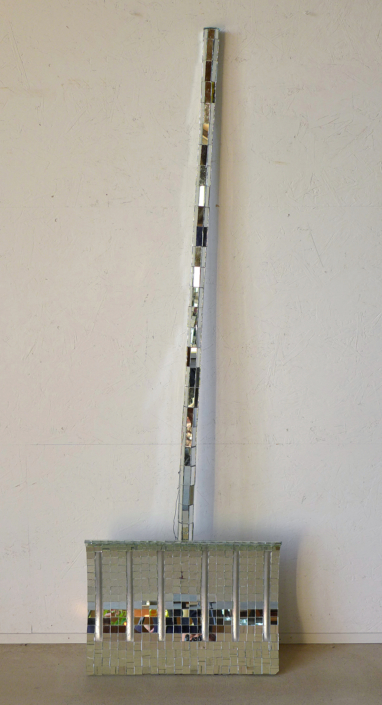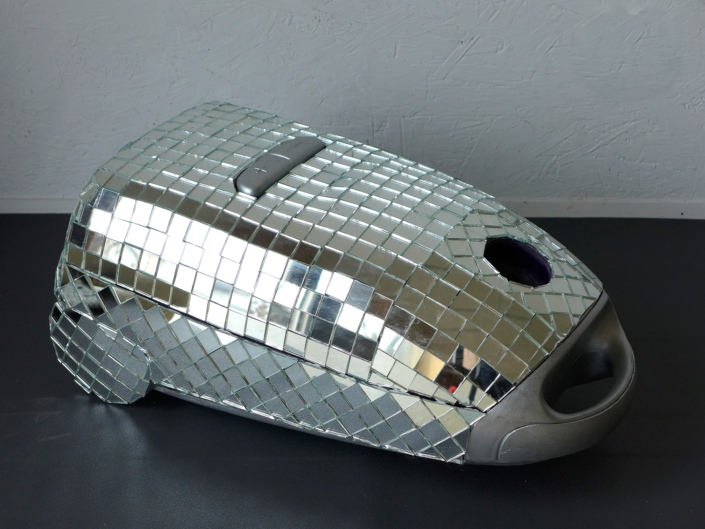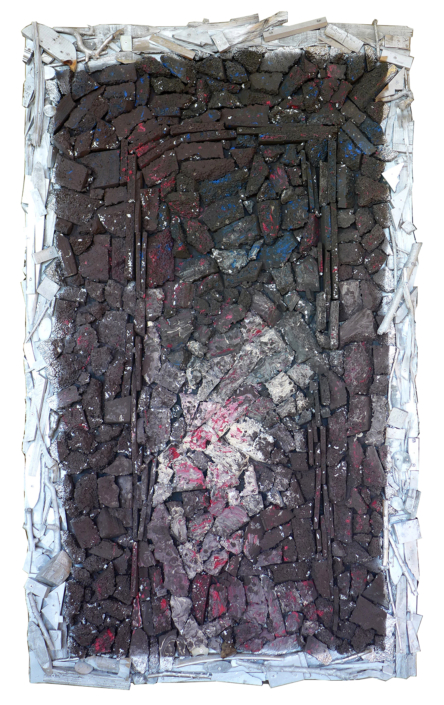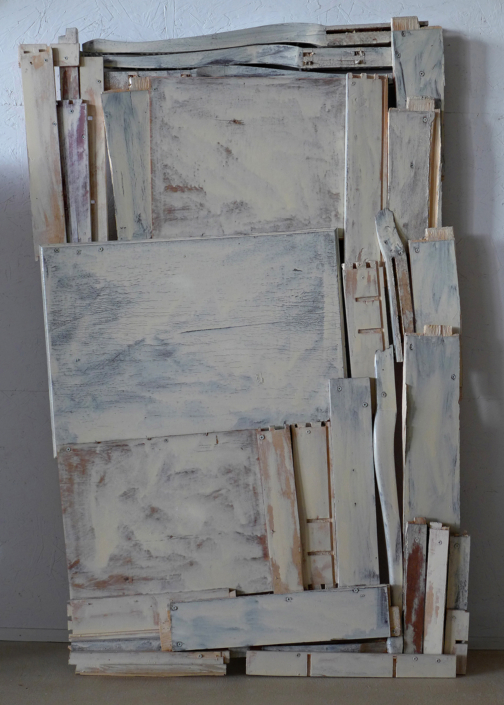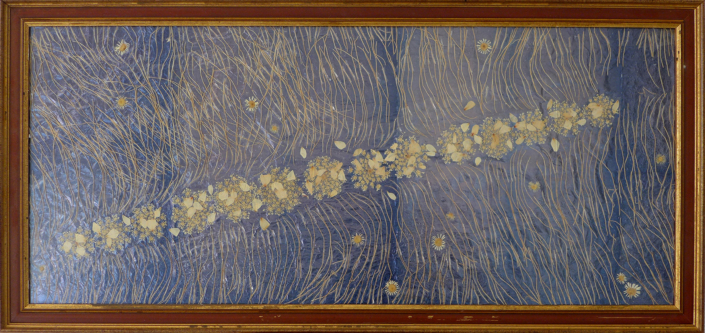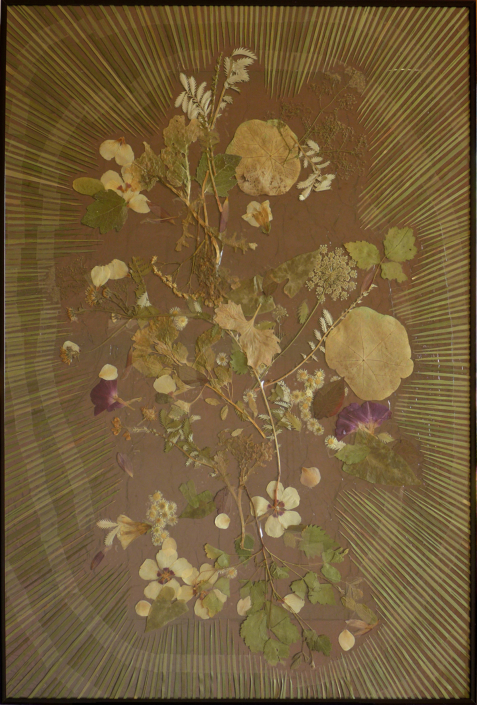Reto Leibundgut
1.3. – 28.3.2024
Reto Leibundgut (*1966) lives and works as a freelance artist in Basel. The artist uses used materials and outdated furnishings to create new and unusual constellations of images, objects and spaces. With impetuous gestures and dedicated processing, new life is breathed into traditional craftsmanship and conventional subjects. Fragmented carpets and tapestries, inlays made from second-hand furniture, expansive wall pieces made from simple cardboard shingles or objects made from sofa leather satirise conventional visual habits. Reto Leibundgut creates contrasting, sensual and at the same time irritating works that humorously transcend traditional values.
In the current exhibition, the artist remains true to his unusual combinations of material and gesture with wall objects, reliefs, mirror objects and herbaria. With skilful craftsmanship, he transforms used furniture, everyday objects and natural artefacts into powerful, abstract compositions, effectively exploring the boundary between the trivial and the sublime. The wall works created from furniture fragments are astonishing in their size and material presence. The original forms of the furniture are fragmented beyond recognition and the surfaces serve as painting grounds for multi-layered abstract, monochrome colour fields. For the pewter tondo, the artist collected all kinds of pewter cups, jugs, goblets and plates from clubs and sports clubs, which he melts into each other under the influence of heat to create a shimmering surface relief. The three-dimensional relief “Organ Improvisation” made from fragments of a disused organ can be swivelled into different positions in the room as a ‘wall wing’. The work appears as an optical piece of music in blue colour tones, with the recipient indicating the beat and melody. Unspectacular everyday objects such as hoovers or snow shovels are freed from their original function as work aids through surface mirroring and mutate into playful light reflectors, similar to a disco ball.
The artist also finds suitable material for his works in nature – large stones are embedded in wall objects, or flowers and leaves are used as pictorial elements in a reinterpretation of the herbarium. In contrast to the traditional form of a systematically organised plant collection for identification purposes, Leibundgut’s herbaria are free compositions of natural materials – subtle plant arrangements on a light-reflecting background.
With his new works, Reto Leibundgut creates a connection between high and low, spirit and matter, and elicits a conciliatory and idiosyncratic beauty from inconspicuous and used material.

